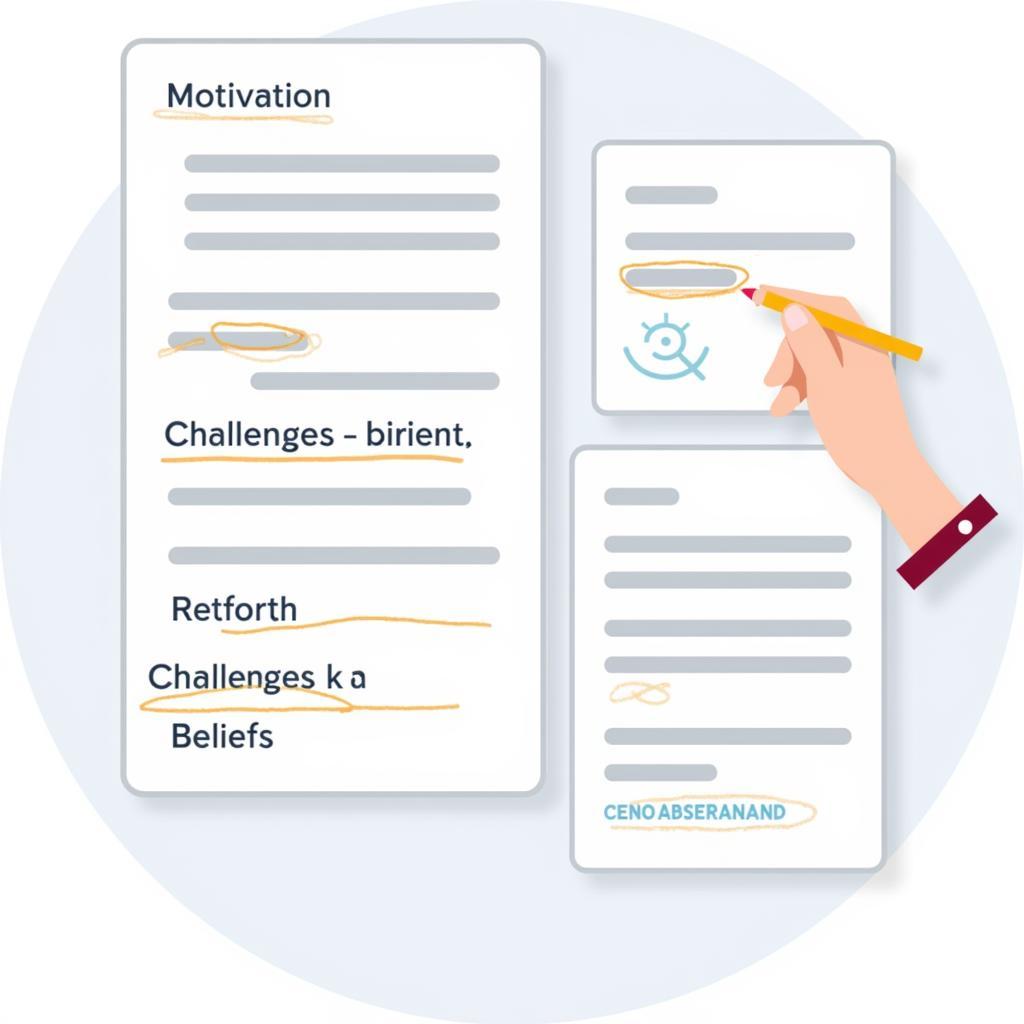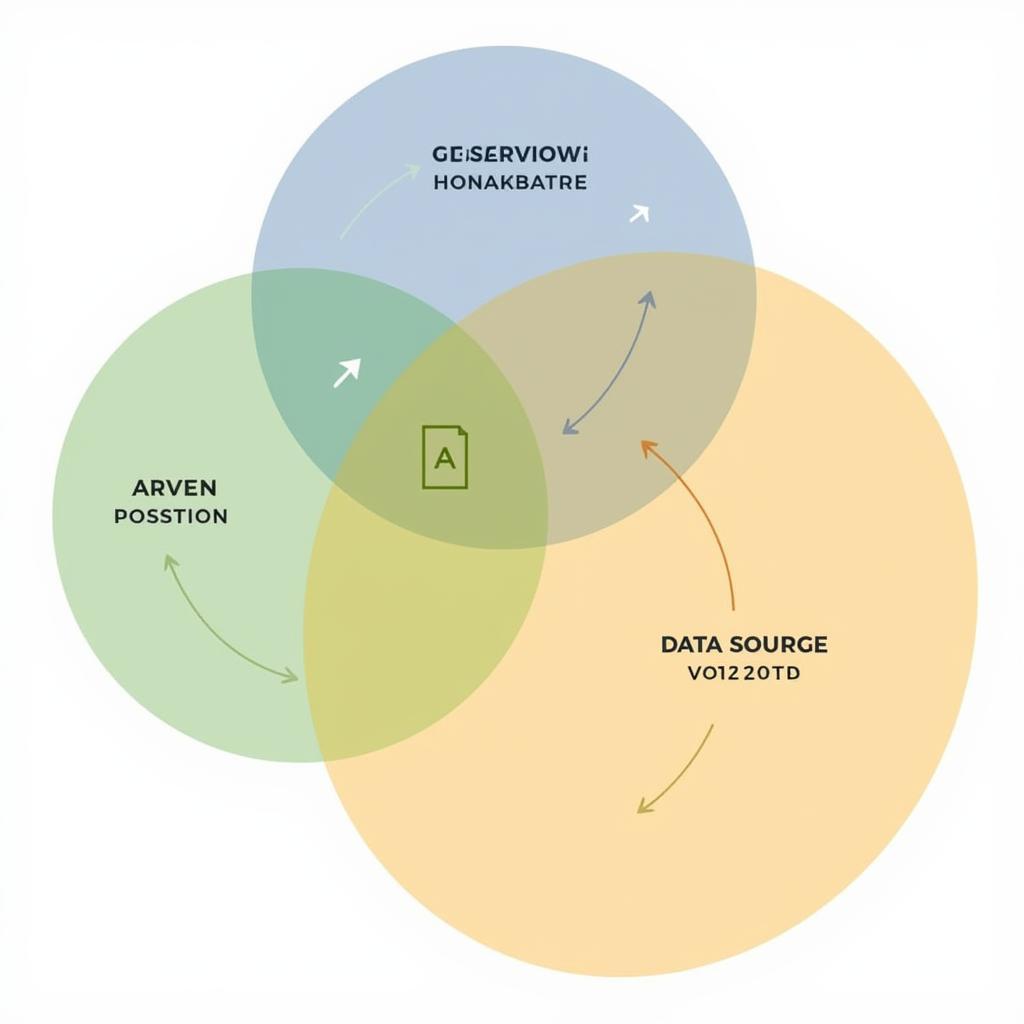Qualitative research delves into the rich tapestry of human experiences, beliefs, and perspectives. Understanding the Steps Of Data Analysis In Qualitative Research is crucial for uncovering the nuanced meanings hidden within the data. This article will guide you through the essential stages of this process, equipping you with the knowledge to effectively analyze qualitative data and draw meaningful conclusions.
Qualitative data analysis isn’t a linear process, but rather a cyclical one, often involving moving back and forth between stages. After the data collection phase, which might involve interviews, observations, or focus groups, the analysis begins. Let’s explore the key steps of data analysis in qualitative research.
Getting Familiar with Your Data: Transcription and Immersion
The first step involves transcribing audio or video recordings into written text. This meticulous process forms the bedrock of your analysis. Once transcribed, immerse yourself in the data. Read and reread the transcripts, field notes, and any other materials you’ve gathered. This allows you to get a feel for the overall themes and patterns that are starting to emerge. You can begin to form initial impressions of the data’s richness and complexity. This stage sets the foundation for a more structured analysis. For a better understanding of the advantages and disadvantages of this approach, you might want to read more about the pros and cons of qualitative research.
Coding: Organizing Your Insights
Coding is the process of systematically categorizing and labeling segments of your data. You assign codes, which can be words or short phrases, to represent key concepts, themes, or ideas that emerge from the data. There are various coding approaches, such as open coding, axial coding, and selective coding. Open coding involves identifying initial concepts, axial coding relates categories to subcategories, and selective coding integrates the categories around a core category. Developing a codebook for qualitative research can help maintain consistency and organization during this process.
 Qualitative Research Coding Process
Qualitative Research Coding Process
Identifying Themes: Unveiling the Narrative
Once your data is coded, you can start to identify broader themes. Themes are overarching patterns and relationships that emerge from the coded data. They represent the key findings of your research. For example, if you’re researching paranormal experiences, themes might emerge related to personal beliefs, cultural influences, or the emotional impact of these experiences. Remember that ensuring trustworthiness qualitative research is paramount for credible results.
What are the most common themes in qualitative research?
Common themes in qualitative research often revolve around experiences, perspectives, beliefs, and behaviors. The specific themes, however, will vary depending on the research question and the nature of the data collected.
Interpreting the Findings: Drawing Meaningful Conclusions
Interpreting the findings involves making sense of the themes you’ve identified and relating them back to your research question. This stage requires careful consideration of the context of your research, the perspectives of your participants, and the existing literature on the topic. You need to move beyond simply describing the themes to explaining their significance and implications. A helpful resource for understanding practical examples of data analysis can be found in this data analysis sample in research paper.
 Interpreting Qualitative Research Findings
Interpreting Qualitative Research Findings
Ensuring Validity and Reliability: Strengthening Your Research
Ensuring the validity and reliability of your findings is essential for building trust in your research. Validity refers to the accuracy of your findings, while reliability refers to the consistency of your methods. There are several strategies you can use to enhance the validity and reliability of your qualitative research, such as triangulation, member checking, and audit trails. You may also want to see an example of quantitative research paper to understand the differences between the two research approaches.
 Validity and Reliability in Qualitative Research
Validity and Reliability in Qualitative Research
Conclusion
Following these steps of data analysis in qualitative research will help you unlock the hidden insights within your data. By carefully transcribing, coding, identifying themes, and interpreting your findings, you can gain a deeper understanding of complex phenomena and contribute valuable knowledge to your field. Remember, the strength of your qualitative research lies in the rigor and transparency of your analytical process.
FAQ
- What is the difference between qualitative and quantitative research?
- What are some common qualitative research methods?
- How do I choose the right coding method for my research?
- What is the role of reflexivity in qualitative research?
- How can I ensure the ethical conduct of my qualitative research?
- What software can be used for qualitative data analysis?
- How do I report the findings of my qualitative research?
Need assistance with your Paranormal Research? Contact us at Phone: 0904826292, Email: research@gmail.com or visit us at No. 31, Alley 142/7, P. Phú Viên, Bồ Đề, Long Biên, Hà Nội, Việt Nam. Our customer service team is available 24/7.